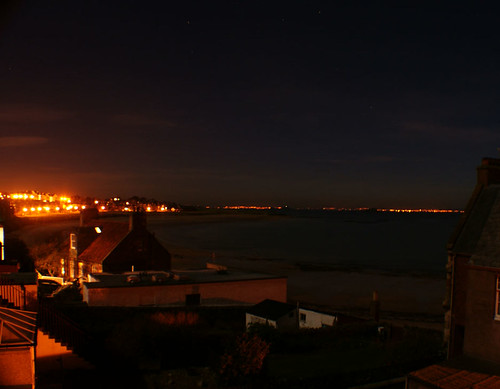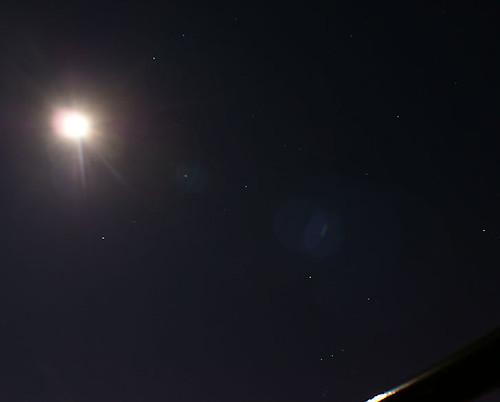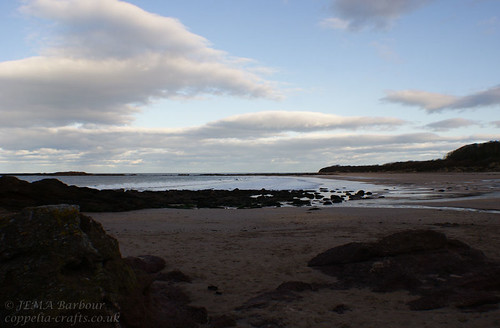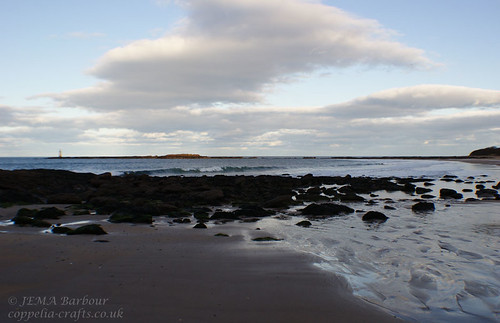I was meant to be having an early night, but the moon was stunning - one day off being full. It was an incredibly clear night, full of stars. The moon was so bright that it cast proper shadows on our balcony, and the whole bay was lit up. The light was silvery, very ethereal looking. I can see why it's often described as having a magical quality; certainly seeing everything lit up that way did make things appear somewhat otherworldly. It wasn't as bright or colourful as the daytime, but it was bright enough to see people walking on the beach, to see the rocks, and water, the waves - even some colours could be made out. Normally all you can see is the occasional flash of murky white as a wave breaks. You wouldn't be able to see the sand or the water, let alone people.
I was in my pyjamas, but I couldn't let the chance go to waste, so out I went onto the balcony, in my dressing gown, with my camera. It was bitterly cold. My dressing gown kept me warm, though my ankles were a little too exposed for my liking.
This is what West Bay looked like:

I set the camera on the table, propped it up, and pointed it at the moon. All things considered, the photo came out pretty well. (Trying to get the camera to focus at that angle was fun, and I was shivering a bit much by that point).

I'm so pleased with this - it's come out amazingly well! Look at those stars - you can see Orion's Belt pretty clearly, just above the reflection on the balcony rail, which is what that black thing across the bottom right hand corner is.


